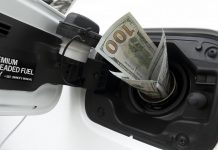April 2011 CEA Newsletter
Issue 49
What Does Energy Mean To You?
Over the past month, CEA’s blog has highlighted a range of energy topics, from efforts to boost solar power production in the sunshine state, to tips just about everyone can use to become more energy efficient at home and at work. In our recent post, Pain moves beyond the pump, we showed how rising oil prices affect us all, even if we don’t own a car and never have occasion to visit a gas station: Recent increases in the price of food and other consumer goods have been linked to higher fuel costs.
This is all part of CEA’s ongoing effort to increase awareness of all forms of energy, how it enables us to live, work, and prosper, and all the different ways we can tap our natural resources to fuel our communities, our businesses, our dreams and our future. Already, the year 2011 has proven to be an extraordinary year, with widespread turmoil in the Middle East, an unprecedented natural disaster in Japan, and here at home, an economy that is on shaky ground and feeling the pressure of surging oil prices. We cannot control most of these events, which is why we must make the most of the sun that warms us here at home, the wind that cools us, the generous reserves of oil and gas that lie beneath us, and the state-of-the-art technology we have developed for channeling all of these resources into reliable sources of fuel.
It often seems so simple, but the reality is much more complex. For decades, our country has been unable to meaningfully reduce our dependence on crude oil imports, and more recently our policymakers have erected a set of particularly daunting (and ever-changing) regulatory hurdles for onshore and offshore natural gas & oil drilling. The problems with so much of our national energy policy were cast in sharp relief recently when President Obama traveled to Brazil and pledged not only to provide the technology and support to help Brazil develop its own oil resources, but then went to say that the U.S. would be one of the best customers for Brazil’s oil. The Obama Administration has also been criticized recently for boasting that oil production is up on its watch; while in reality, oil flows seen today, reflect projects that were approved years ago. It is bad enough that we fail to tap our own natural resources, but when we then encourage other countries to produce more oil our domestic policy seems even more misguided.
Education is the first step toward building consensus on a national energy policy that truly diversifies our energy mix, properly recognizes our current energy needs and fundamentally makes sense for all Americans. It will lead to continued technological breakthroughs and it will build our understanding of the risks of neglecting our home-grown resources. This year, education will also be a key theme of CEA’s Energy Day, October 15 in Houston. The event will feature interactive displays of energy production and efficiencies, demonstrations of the most advanced energy production technology, and contests for high school and college science projects, all focused on the tangible questions of what energy means in our everyday lives and how we can meet our future energy challenges. Meeting those future challenges will require effort and understanding from all of us. So think about it: What does energy really mean to you?
David Holt

Protect the Public Use of Our Oceans:
Tell Washington to Ensure Commercial and Recreational Access to Coastal and Offshore Activities
This past summer, the Obama Administration formed a new bureaucracy to implement a national ocean policy and direct federal agencies to oversee these plans. Following the President’s order, the Interagency Ocean Policy Task Force developed a series of recommendations for ocean management that included nine national priority objectives for a federal oceans policy. Now, the newly formed National Ocean Council would like public input on how to turn these objectives into action plans, which may as well be lingo for “more regulations.”
Our oceans support several vital industries – including fishing, tourism, traditional and renewable energy development and shipping – as well as millions of American jobs. Given its significance to our economy, its sustainable use remains a priority for coastal residents and governments. Already, several federal and local agencies oversee commercial and recreational activities and ensure these practices do not significantly distress the health of local ecosystems or local residents.
However, the National Ocean Council is seeking to use coastal & marine spatial planning – essentially ocean zoning – and other practices that may limit, if not ban, offshore oil and gas production as well as a multitude of other commercial and recreational activities offshore and onshore. Not only will our domestic offshore energy production be stymied by another layer of federal bureaucracy, but given how broad the goals are, these proposed policies may also affect economic activity far away from our coasts.
Tell the Obama Administration how valuable our marine resources are to our economy and make sure the federal government doesn’t block public access through a series of red tape. Please feel free to use our draft letter below and tell the National Ocean Council to protect the public’s rights. For more information on oceans policy, please visit the National Ocean Policy Coalition. Comment period closes April 29, 2011.


As Energy Day 2011 approaches, momentum is really picking up. There has been a couple of interesting Energy Day developments throughout the month of March. On April 12th the second Energy Day Steering Committee meeting will take place at City Hall in Downtown Houston. Also, CEA would like to welcome 4 new Energy Day Partners; Foundation for Energy Education, Knowledge Is Power Program (KIPP), University of Texas and the U.S. Chamber of Commerce Institute for 21st Century Energy.
Here is the list of confirmed Energy Day sponsors:
ABC-13, American Public Power Association, Apache, Bug Ware, Inc., Caterpillar, City of Houston, Consumer Energy Alliance , Consumer Energy Education Foundation, Cooperative for After-School Enrichment (CASE), CSTEM Teacher & Student Support Services, Earth Quest Institute, Eco-Holdings Engineering, Energy People Connect, Environmentally Friendly Drilling Project, Foundation for Energy Education, Greater Houston Partnership, Green Mountain Energy, Halliburton, Harris County Dept. of Education , Houston Advanced Research Center, Houston Area Land Rover Centers, Houston Independent School District, Museum of Natural Science, Wiess Energy Hall , Houston Renewable Energy Network, Houston Technology Center, KBR, Inc. , Lone Star College, Momentum Luxury Group , NASA-Johnson Space Center , National Algae Association , Offshore Energy Center, Science & Engineering Fair of Houston, Shell, 60 Plus Association, Solar Tour Houston , Statoil, Texas Alliance for Minorities in Engineering, The Wind Alliance, TransCanada, TXU, University of Houston, University of Texas, U.S. Chamber of Commerce, Western Energy Alliance
We need your participation and involvement to make this an outstanding event! Please email Kathleen atKKoehler@consumerenergyalliance.org for details.
Energy Day Academic Awards Program – Upcoming Events
While Energy Day is still a little over six months away, the Energy Day Academic Awards Program will get started in April with 3 events. Each event will also count towards the Energy Capital Academic Program (ECAP) for all of those who attend. For more details on the Energy Day Academic Awards Program or the Energy Capital Academic Program please email Craig at: Koshkin@consumerenergyalliance.org.
The Science and Engineering Fair of Houston (SEFH) —April 7-9, 2011
Since 1960, SEFH has promoted the “learning and applications of science and technology” for Texas junior and senior high schools students in Houston and the surrounding 23-county area. SEFH is a regional fair, associated with the INTEL International Science & Engineering Fair and is one of the largest pre-college STEM activities in the U.S. April 7 is project registration and setup day; April 8 is judging day; and, April 9 the projects are on public display from 9:00 a.m.-2:30 p.m. in Hall A3 of the George R. Brown Convention Center, and the Awards Ceremony is from 2:30-5:30 p.m. in Hall B3. More details about SEFH.
On April 8, judges from the CEA Energy Day Steering Committee will select three energy-related team projects to receive an award. Winning projects will be chosen based on creativity, originality, knowledge of student, effort, conclusions and quality of display. Awards will also be given to the top three winners in each division of the Energy & Transportation category. In all, CEA will give 12 awards at SEFH.
Winning teams will be recognized at the SEFH Awards Ceremony, will receive awards at Energy Day, and will be invited to display their projects at Energy Day on October 15, 2011.
The International CSTEM Challenge—April 16, 2011
On April 16th more than 3,000 students from across the country and the Dominican Republic will transform Downtown Houston into a science and technology think tank. The International CSTEM Challenge is free to the public and will be held at the George R. Brown Convention Center. Students grades P-12 will showcase projects ranging from sculptures to robotics. This year CSTEM has partnered with the Shell Eco-Marathon, a competition where high school and college students unveil futuristic vehicles running on alternative energy resources. This event will be held at Discovery Green.
The annual CSTEM competition aims to interest kids of all walks of life and aptitude in careers in science, technology, engineering and mathematics. CSTEM is educating and enabling our nation’s workforce to succeed in the 21st century. For more information visit www.cstem.org.
Energize! Houston
Houston Northwest Chamber of Commerce (HNWCC) and the Houston Airport System are hosting Energize! Houston, a family-friendly annual festival that provides an opportunity to enjoy a fun day of activities, static aircraft displays and demonstrations focusing on energy and transportation. Visit the pilots and their planes up close and personally, learn about making slime, check out the AFLAC racecar, find out how CenterPoint Energy delivers electricity to light up your home, and see how bio-fuels are changing transportation! Take time to explore the Offshore Technology Center Mobile Lab, to see the Global Tae Kwon Do International Team, meet the Airport Rangers, and much more!
Energize! Houston is at George Bush Intercontinental Airport (IAH), Continental Hangar B, 4365 Wright Road, Houston 77032 on April 30, 2011 from 12 noon to 4pm. More details for Energize Houston.
Interested in discovering ways to use renewable energy around your home? The U.S. Department of Energy maintains a wealth of information on what you can do with renewable energy. Check out these tips:
- Use a clothesline rather than a clothes dryer – a simple way to use solar energy and reduce costs!
- Pump water using a small wind turbine
- Heat and cool your home using a geothermal or ground-source heat pump
- Have flowing water on your property? Use a microhydropower system to generate your own electricity
- In winter, heat areas of your home using wood or biobased pellets
To learn more about using renewable energy, visit the Renewable Energy section of EnergySavers.gov, a consumer-geared website of the U.S. Department of Energy.

CEA Affiliate Spotlight
As policymakers work to address our growing demand for energy, all forms of technology and resources need to be sustainably harnessed to increase production and supply, lower costs and strengthen energy security.
One way to do so is to employ state-of-the-art technology to produce synthetic fuels from natural gas abundant in North America.
Not only is natural gas a clean source of energy to generate electricity, but this feedstock can be converted to clean-burning fuels with numerous benefits for the environment, economy and national security. And due to new exploration and drilling technologies, the amount of natural gas available for production in the U.S. has soared by 58% over the last four years, making synthetic fuel production from natural gas an attractive option to utilize these resources to meet our transportation fuel needs.
CEA member Sasol, an integrated energy and chemicals company, has produced synthetic fuels from both coal and from natural gas using their proprietary Fischer-Tropsch technology for over 60 years. Gas-to-liquids (GTL) fuel includes GTL diesel, naphtha, liquefied petroleum gas, jet fuel and chemical feedstock.
With headquarters in Johannesburg, South Africa, operations in 38 countries and a workforce of nearly 35,000, Sasol currently operates the Oryx GTL facility in a joint venture with Qatar Petroleum in Qatar.
As CEA members recently learned, Sasol has partnered with Talisman, a Canadian oil and gas exploration and production company, for shale gas production in British Columbia and most significantly, to explore the potential to bring GTL technology to North America for the first time.
Projects of this nature provide a strong vehicle for job creation, strengthened energy and national security and environmental stewardship.
- An average GTL facility is expected to support 600 permanent jobs, in addition to significant construction and indirect jobs. Local communities will also gain much needed new tax revenue and economic stimulus.
- GTL fuels are virtually free of sulfur and aromatic compounds and reduce emissions of particulates, nitrogen oxides, carbon monoxide and other ollutants, helping to meet emission mandates.
- GTL fuels can be used in diesel and jet engines and transported utilizing existing tankers and pipelines.
Synthetic fuels produced from natural gas can play a meaningful role in diversifying and strengthening our energy supply. It’s important that CEA members – energy producers, suppliers and consumers alike – work together with policymakers to enact meaningful and responsible energy policy that fully utilizes our domestic energy resources, leading to a cleaner, more secure energy future for our nation.













